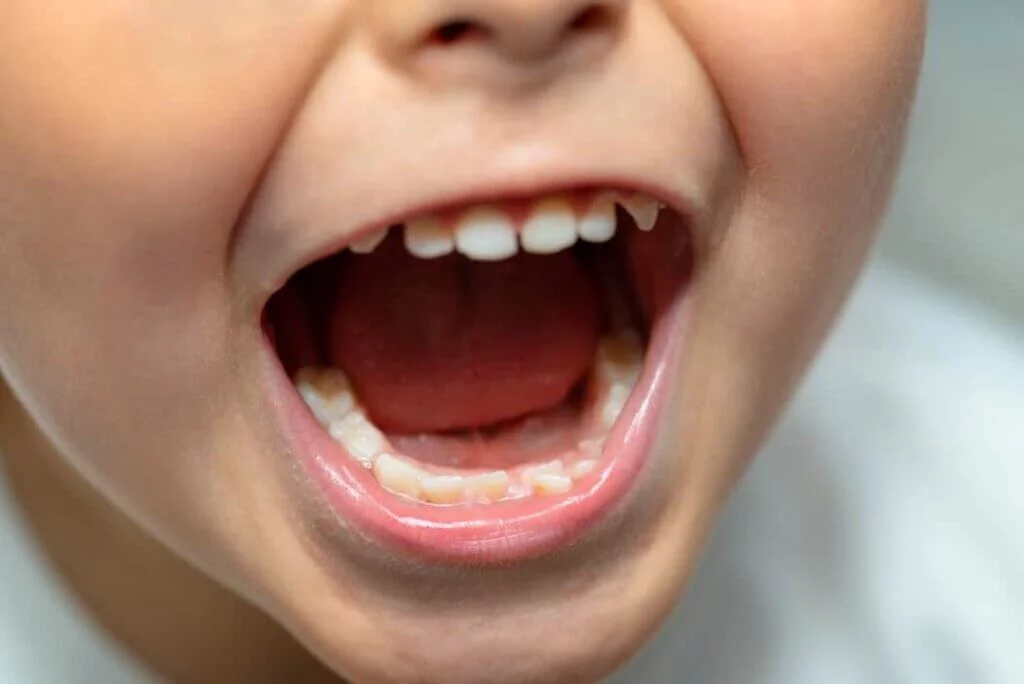
01 Jan How to tell if baby will have gap teeth?
If you’ve ever had a gap in your teeth, then you know how embarrassing it can be. But there’s something even worse than just having a gap-toothed smile: not knowing if your baby will inherit this trait from her parents. Fortunately, there are several clues that can help determine if your child will develop a gap between her front teeth as she grows up.
How to tell if baby will have gap teeth?
To determine if your child will have gap teeth, you can look at her current teeth and see if there are any gaps. Look for a deep groove running down the middle of each front tooth, which indicates that they’re already separating.
1. Check your family history. If you or any of your close relatives have gap teeth, then there’s a good chance that your child will develop a gap between her front teeth as well. This is because tooth gaps tend to run in families.
2. Look at your child’s mouth. If your baby has a cleft palate, then there’s a good chance that she’ll develop a gap between her front teeth as well. This is because a cleft palate is often associated with numerous other types of physical deformities or birth defects.
3. Look at your child’s face. If your baby has a flat facial profile, then there’s a good chance that she’ll develop a gap between her front teeth as well. This is because a flat facial profile is often associated with numerous other types of physical deformities or birth defects.
4. Look at your child’s teeth. If your baby has a gap between her front teeth, then there’s a good chance that she’ll develop a gap between her front teeth as well. This is because gaps tend to run in families.
5. Look at your child’s mouth. If your baby has a cleft palate, then there’s a good chance that she’ll develop a gap between her front teeth as well.
Is there a gap between the incisors?
If you look at your child’s teeth, you will see the upper and lower sets of incisors. The space between these teeth should be about the size of a grain of rice. If the gap is much wider than this, it could indicate that your child will have diastema—or gaps between their front teeth. This can happen if one or both sets of posterior molars (also known as premolars) are missing or if more than two permanent molars are missing on either side.
If there is very little space between the incisors, then your child may develop crowding later in life because their jaws grow faster than other parts of their face do (think: cheeks).
Is there a deep groove running down the middle of the front teeth?
So your little one is teething, which means he or she will most likely begin to drool. This drooling can lead to a wet spot on the front of their shirt and/or dribble in their mouth. While adorable (we promise!), it’s important that you always keep a bib handy for when your little one starts to get messy. But what about when they’re not teething? What are those deep grooves in his or her teeth?
If you see a deep groove running down the middle of the front teeth, it’s called diastema (pronounced die-uh-stem). Diastema can be caused by genetics or by thumb sucking—and yes, both are equally adorable! However there’s no need to worry if your child has gap teeth; as long as there’s no other orthodontic issue present (like an impacted tooth), braces can close up this space and straighten out those chompers for good!
Do the front teeth appear to be an odd shape?
- Look at the child’s teeth. If they appear to be an odd shape, or if one tooth is lower than another, this may signal that there will be space between the incisors and canines. A gap can also occur if the upper front teeth are misaligned with their counterparts on the bottom jaw.
If you do notice gaps, be sure that your child sees a dentist as soon as possible so that he or she can get braces to close them up before they become permanent!
Has the child inherited this trait from one of her parents?
- Have you inherited this trait from one of your parents?
If your child has a gap between their teeth, it’s possible that they inherited this trait from one of you. If you have a gap between your teeth, there’s a good chance he’ll get one too. Likewise, if he has a deep groove running down the middle of his front teeth (called diastema), there is also a high chance that she will get one too.
What should you do if your toddler has diastema?
If your child has diastema, it’s important to understand the cause of the gap. Dental issues may be caused by genetics, misaligned teeth and jaws, or some other reason.
You should also learn about the consequences of having a gap in the teeth before you decide what action to take. For example, if there are no problems with speech development or growth in children who have a mild diastema on one side of their mouths, then treatment may not be necessary at all. If there is any concern about how much space between two teeth will affect eating habits and speech development in your baby or toddler with an extra space between their front teeth then you should speak with your pediatrician right away.
Conclusion
If your child has diastema, you should schedule a check-up with her dentist. The dentist will take an X-ray of the teeth to see if there is room for them to grow together. If there is not enough space for the front teeth to come together naturally, then surgery may be recommended.


No Comments